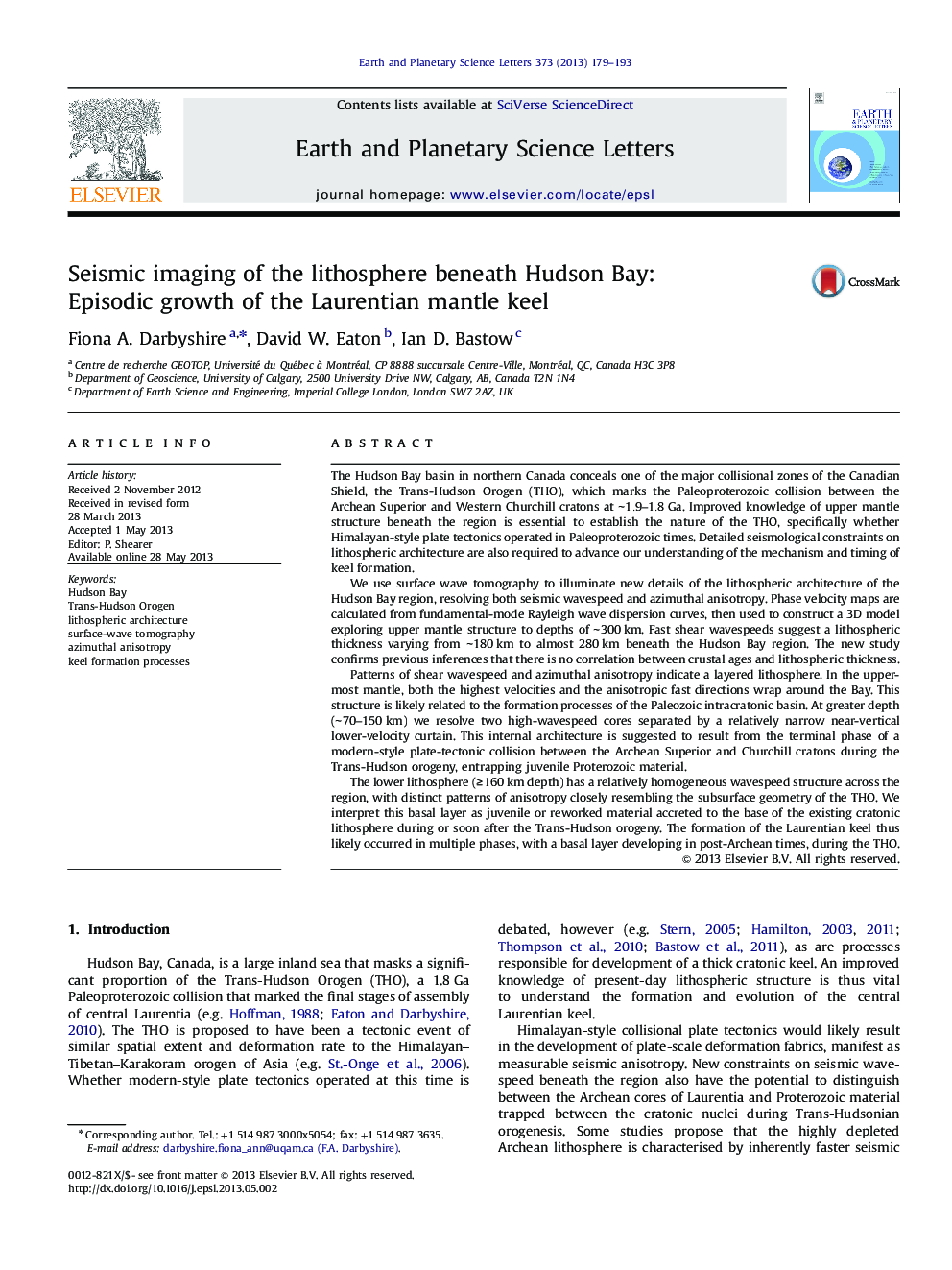| کد مقاله | کد نشریه | سال انتشار | مقاله انگلیسی | نسخه تمام متن |
|---|---|---|---|---|
| 4677077 | 1634782 | 2013 | 15 صفحه PDF | دانلود رایگان |
The Hudson Bay basin in northern Canada conceals one of the major collisional zones of the Canadian Shield, the Trans-Hudson Orogen (THO), which marks the Paleoproterozoic collision between the Archean Superior and Western Churchill cratons at ∼1.9–1.8Ga. Improved knowledge of upper mantle structure beneath the region is essential to establish the nature of the THO, specifically whether Himalayan-style plate tectonics operated in Paleoproterozoic times. Detailed seismological constraints on lithospheric architecture are also required to advance our understanding of the mechanism and timing of keel formation.We use surface wave tomography to illuminate new details of the lithospheric architecture of the Hudson Bay region, resolving both seismic wavespeed and azimuthal anisotropy. Phase velocity maps are calculated from fundamental-mode Rayleigh wave dispersion curves, then used to construct a 3D model exploring upper mantle structure to depths of ∼300km. Fast shear wavespeeds suggest a lithospheric thickness varying from ∼180km to almost 280 km beneath the Hudson Bay region. The new study confirms previous inferences that there is no correlation between crustal ages and lithospheric thickness.Patterns of shear wavespeed and azimuthal anisotropy indicate a layered lithosphere. In the uppermost mantle, both the highest velocities and the anisotropic fast directions wrap around the Bay. This structure is likely related to the formation processes of the Paleozoic intracratonic basin. At greater depth (∼70–150km) we resolve two high-wavespeed cores separated by a relatively narrow near-vertical lower-velocity curtain. This internal architecture is suggested to result from the terminal phase of a modern-style plate-tectonic collision between the Archean Superior and Churchill cratons during the Trans-Hudson orogeny, entrapping juvenile Proterozoic material.The lower lithosphere (≥160km depth) has a relatively homogeneous wavespeed structure across the region, with distinct patterns of anisotropy closely resembling the subsurface geometry of the THO. We interpret this basal layer as juvenile or reworked material accreted to the base of the existing cratonic lithosphere during or soon after the Trans-Hudson orogeny. The formation of the Laurentian keel thus likely occurred in multiple phases, with a basal layer developing in post-Archean times, during the THO.
• Lithospheric thickness beneath Laurentia varies from 180 to >260km.
• Archean cores of Laurentia show higher wavespeeds than Proterozoic THO lithosphere.
• The cratonic keel is layered; the lower formed by basal accretion during the THO.
• Fossil anisotropic fabrics indicate Proterozoic plate-tectonic processes.
Journal: Earth and Planetary Science Letters - Volume 373, 1 July 2013, Pages 179–193
